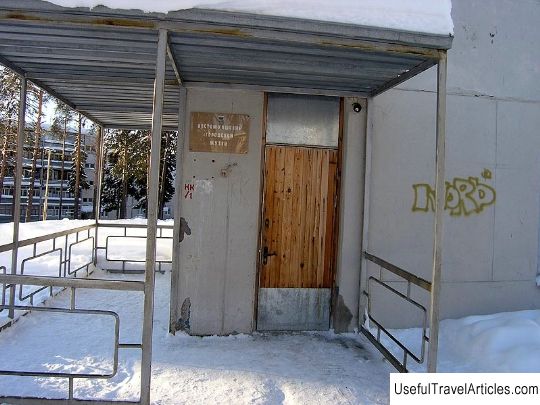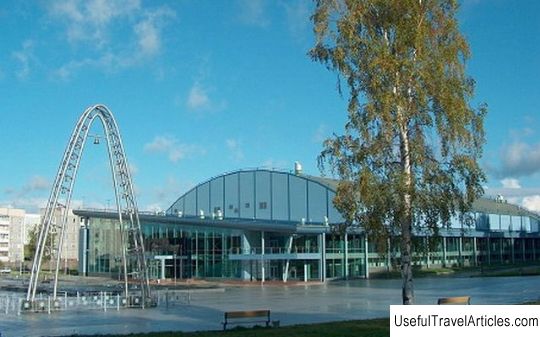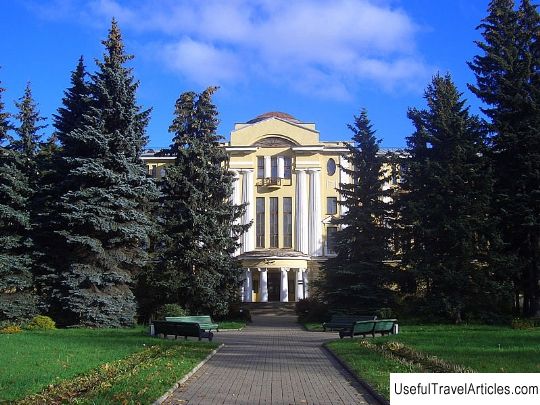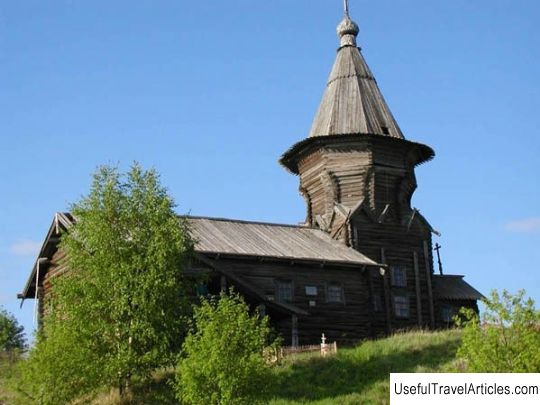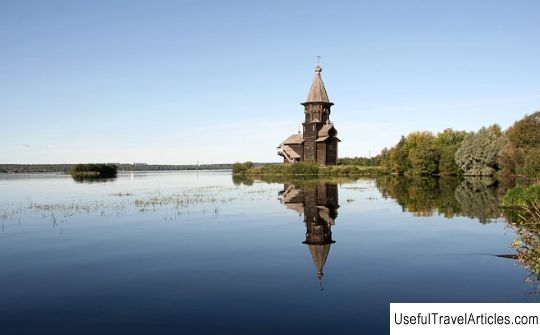Museum of Kondopoga region description and photos - Russia - Karelia: Kondopoga
Rating: 7,5/10 (100 votes) 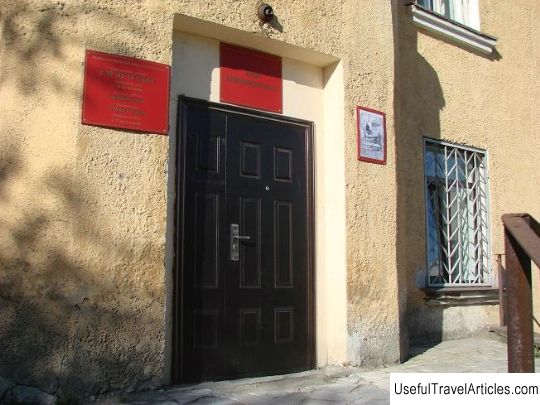
Museum of the Kondopoga region description and photos - Russia - Karelia: Kondopoga. Detailed information about the attraction. Description, photos and a map showing the nearest significant objects. Photo and descriptionSince June 1981, there has been a public city museum in the city of Kondopoga. It was opened as a museum of a local mining and processing plant. His collection is based on materials telling about the discovery of an iron ore deposit in the Kostomuksha region, the construction of a plant and a city, as well as a collection of writers from Karelia. The museum receives about 6 thousand visitors a year. The museum has a total area of & nbsp; 200 sq. m. and is located on & nbsp; st. Proletarian in the house 13. & nbsp; The museum's collections include & nbsp; more than 2000 exhibits. They represent archival documents, collections of coins, ethnographic exhibits, paintings and graphics, samples of products of the region's enterprises collected by the residents of the city. In the future, it is planned to create a new exposition - the Museum of Paper. The museum now also includes a monument of the 18th century, this is a construction of wooden hipped roof architecture of the Onega school - the Church of the Assumption of the Mother of God. One of the first expositions of the museum is "History of Kondopoga and the Kondopoga region" - tells how & nbsp; Kondopoga turned from a village into an industrial city on Lake Onega. Historical information about the population of this area has existed since the 15th century. The village became most famous in & nbsp; XVIII century, when Kondopoga was a transit point, marble was sent from here to St. Petersburg, like & nbsp; on ships and across land. Here in 1757 -1764. deposits of marble were discovered, they were located in the villages of Tivdia and Belaya Gora. Also in the area of Kondopoga they found deposits of iron ore, they started it & nbsp; to develop and transport to the plant in Petrovskaya Sloboda (Petrozavodsk), deposits of copper ore were also found, it was sent to the iron smelting plant in the Olonets province of the Russian Empire. The museum now offers samples of local marble and products of metallurgical plants. These are cannonballs, oven doors, axes and much more. & Nbsp; The factories that operated in the 18th and 19th centuries on the territory of this region influenced the rapid development and construction of the city of Kondopoga. Now it is an industrial city, the first hydroelectric power plant in Karelia, a paper mill was built here. The exposition "Life and Culture of Karelians" is interesting; it presents household items, tools, clothes of the Karelian people. Exhibits tell about folk crafts, crafts and cultural traditions of the indigenous inhabitants of the Karelian region and these unique items are of great interest to visitors. For example, the collection & nbsp; antique irons (iron, coal, ruble and rolling pin for ironing clothes) - all items are collected here that tell about the history of the improvement of this familiar household item. True witnesses of the history of this area during the Great Patriotic War & nbsp; - items and documents of the war period. During the war, there were German fascist & nbsp; the occupation troops, there were battles. The letters, personal belongings, soldiers' awards, photographs and documents collected here remind us of the events of those distant years. There is an exposition in the museum that introduces the post-war city & nbsp; - "Big Kondopoga". In 1959 g. Kondopoga became & nbsp; All-Union Komsomol construction site, the city began to develop rapidly. The interior of the 1960s has been recreated in the hall, in it you will see a gramophone, a Singer sewing machine, a round table and a sideboard, and many other things reminiscent of & nbsp; social and cultural life of this period. В & nbsp; the museum has various exhibitions. One of them is called the `` Treasure of History ''; coins, paper money of the USSR and foreign countries are presented here. The museum often hosts exhibitions of works of artists from Karelia, but the staff are always happy to organize exhibitions of works by other artists. The museum also hosts educational & nbsp; classes for schoolchildren on the following topics: & nbsp; Travel to the ancient world, Carving and painting by the masters of Karelia, Travel of a coin, Life and culture of Karelians, & nbsp; From Kondostroy to modern Kondopoga, Artists of Karelia. Here you can learn how to weave products from birch bark, make toys, master Karelian wood painting.      We also recommend reading Church of San Esteban (Iglesia de San Esteban) description and photos - Spain: Seville Topic: Museum of Kondopoga region description and photos - Russia - Karelia: Kondopoga. |
